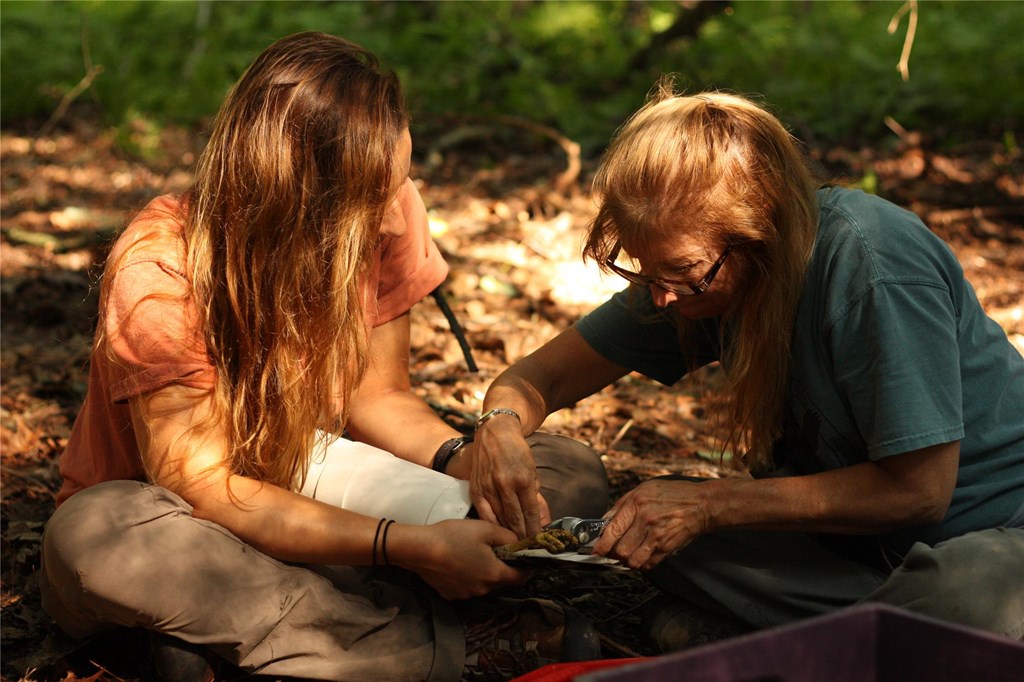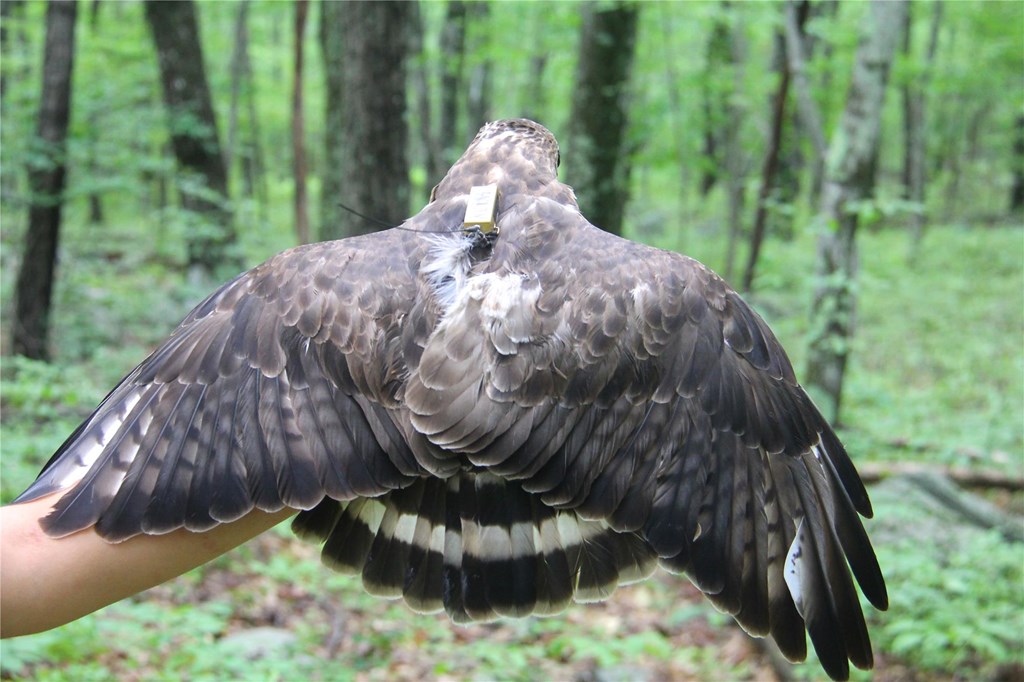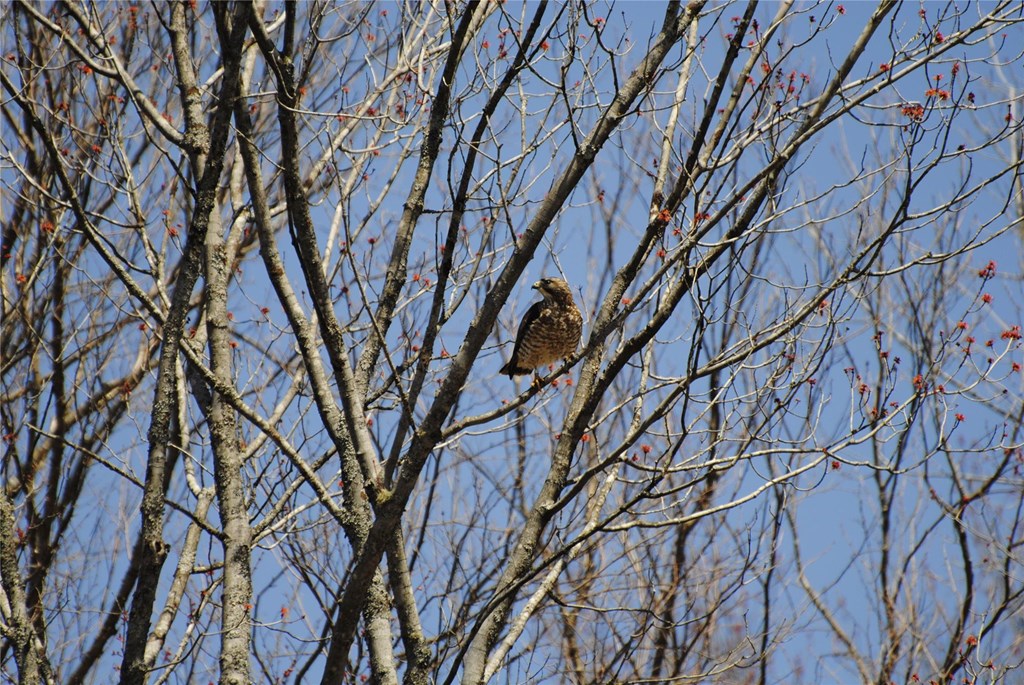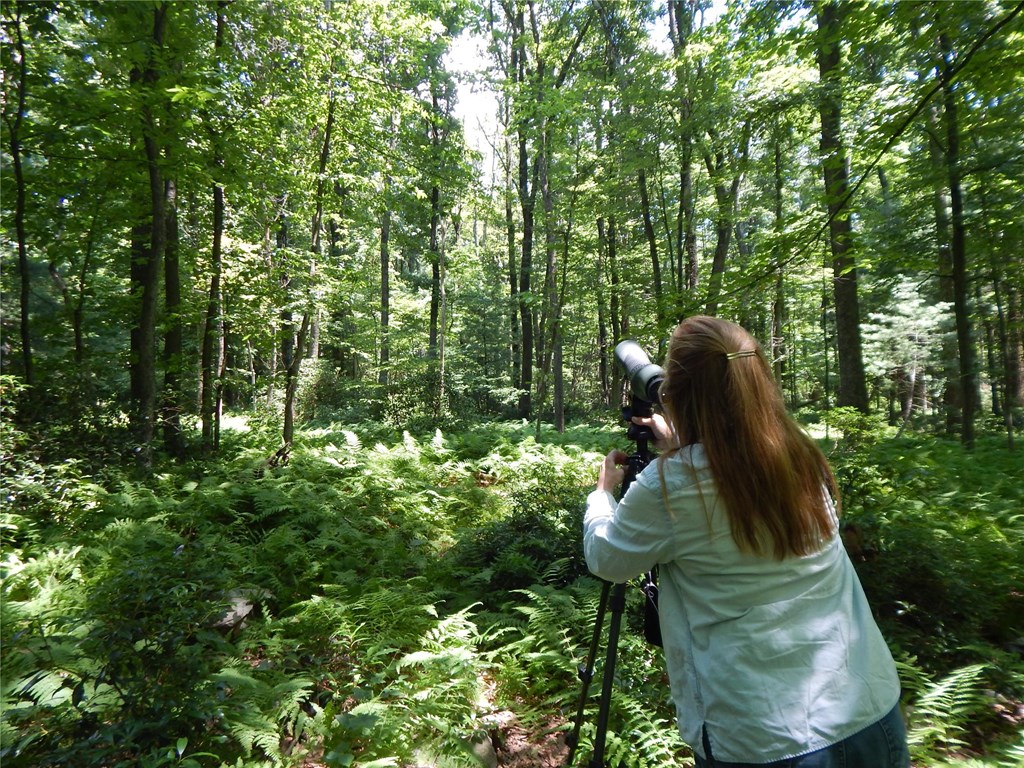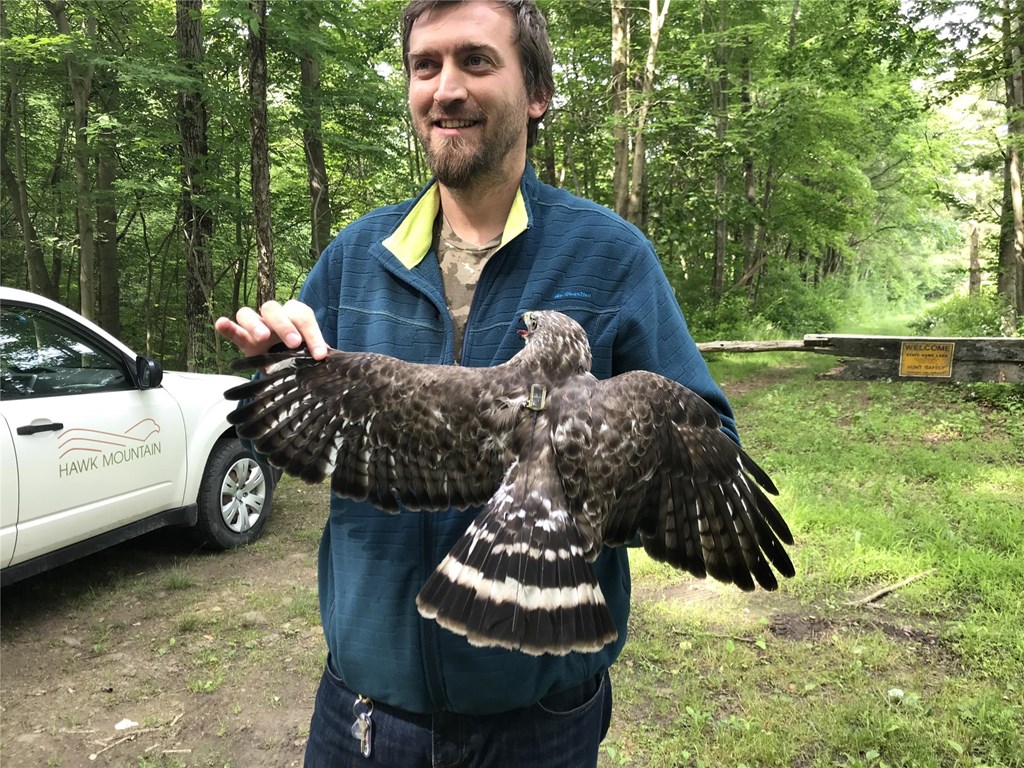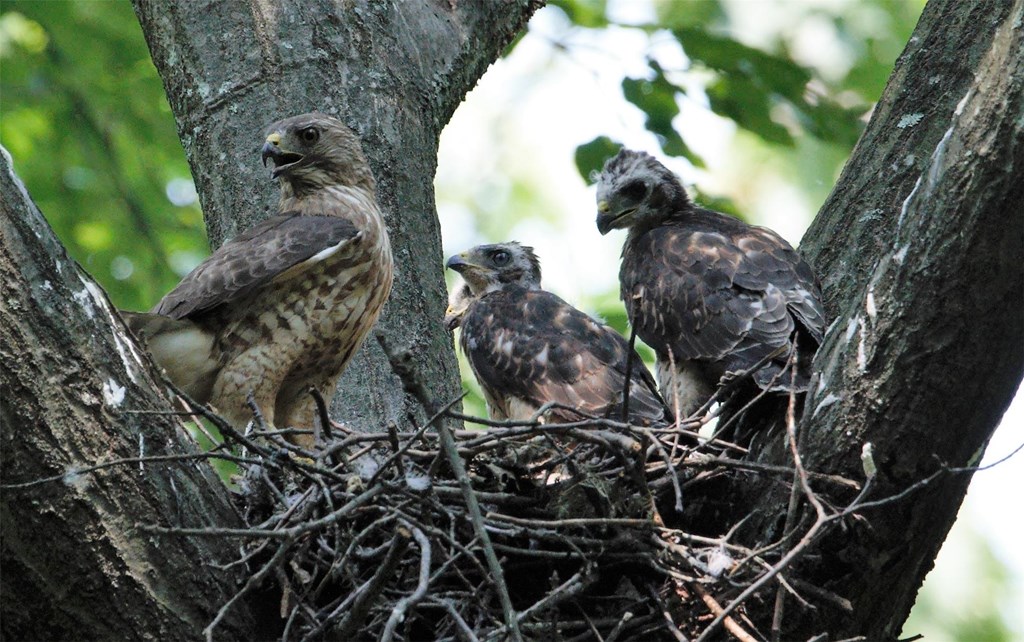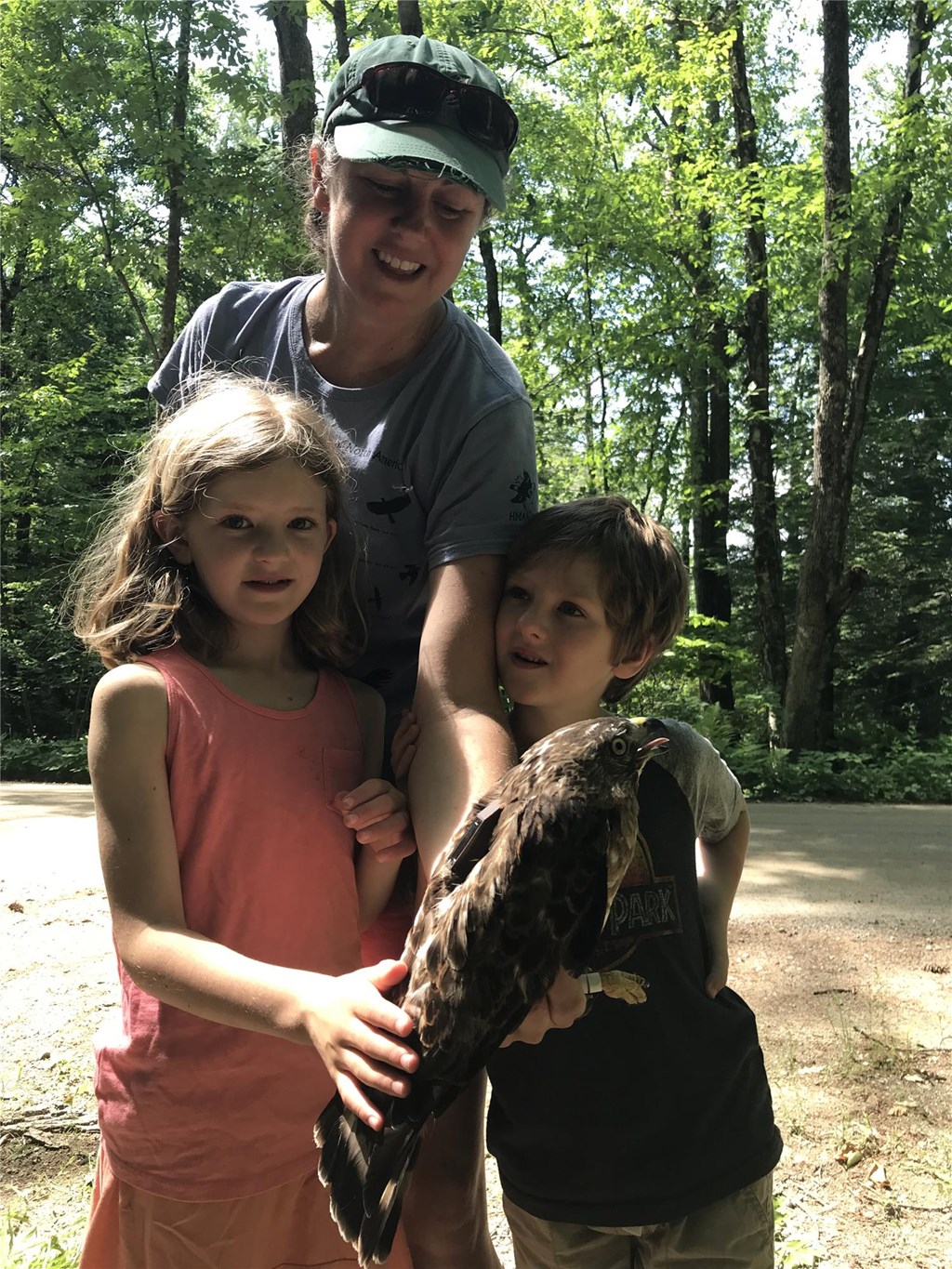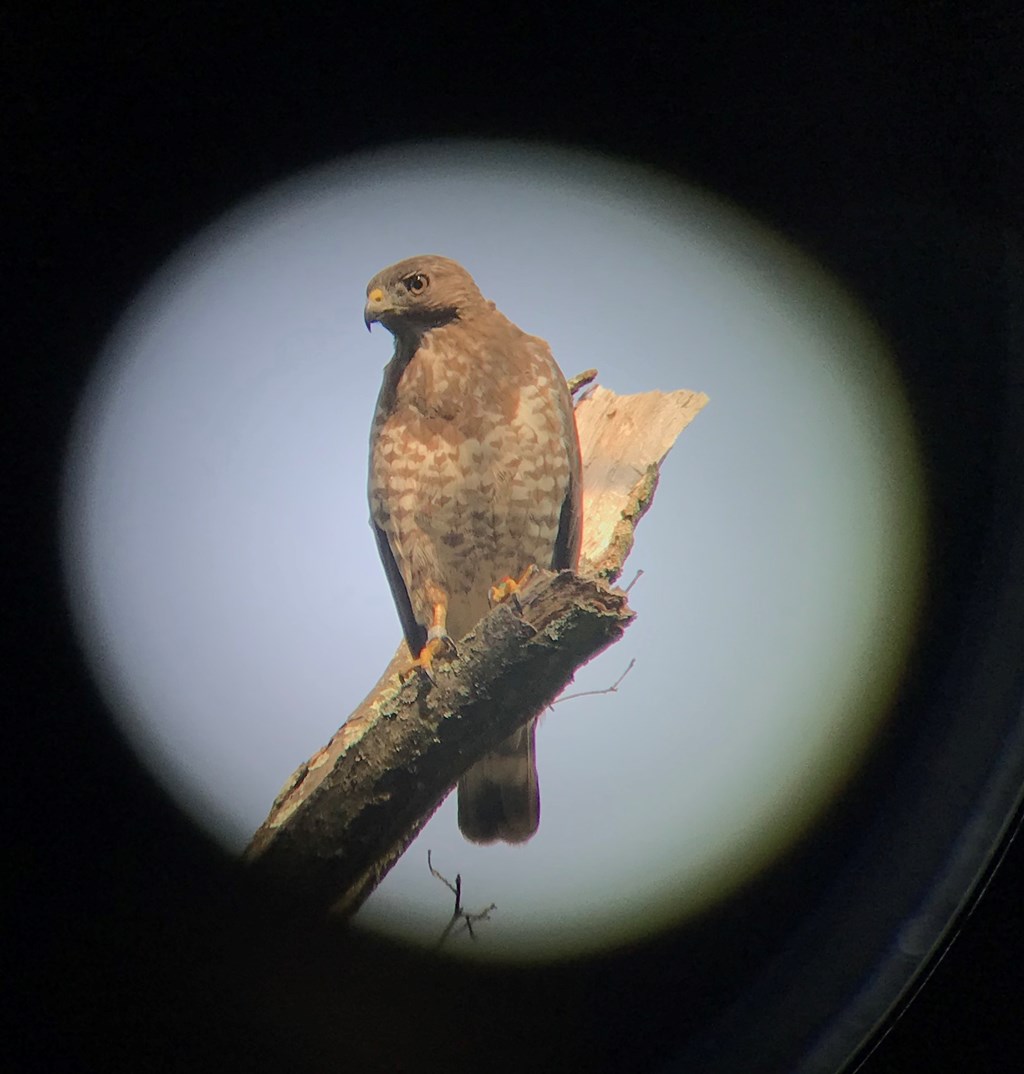The Broad-winged Hawk Project
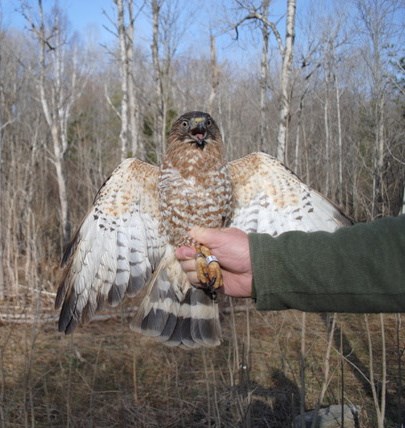
The broad-winged hawk nests in forests throughout eastern and central United States and southern Canada. It is designated a “Pennsylvania species of conservation concern” as its nesting distribution has declined by 16% since the 1980s. Regional declines have been noted in other northeastern states and on some migration counts.
Broad-winged hawks are one of the most abundant migrants observed at Hawk Mountain each autumn, as they concentrate in large flocks along the Kittatinny Ridge and at other watchsites during September. Although they are the most numerous migrant seen in the east, comparatively little research has been conducted on habitat needs or migration and wintering ecology.
In 2014 Hawk Mountain launched The Broad-winged Hawk Project, focusing on various aspects of the broad-winged Hawks ecology during both the breeding and nonbreeding periods. Using nest cameras and on-the-ground field observations, the research team analyzed differences in parental behavior, prey and nest material deliveries from incubation through fledgling among three forested regions in Pennsylvania (see McCabe et al. 2019 for results). In addition, broad-winged hawks were trapped at their nest sites and equipped with satellite transmitters to track their migration from North to South America, and back. The research team tracked 14 hawks from two breeding populations (Pennsylvania, USA and Alberta, Canada) between 2014-2019 to determine if the two populations differed in migration timing, routes, distance traveled, arrival and departure dates, and overwintering locations (see McCabe et al. 2020 for results).
Meet the Birds & View Migration Maps Donate and Adopt a Broadwing
Follow the Project Facebook In the Media Research Videos Curriculum
Adopt a Broadwing
Support this research by "adopting" a broad-winged hawk. Various giving levels available.
DownloadFor the future, Hawk Mountain is focusing on:
- Tag additional male broad-winged hawks to see if they are faced with different conservation challenges during the nonbreeding period.
- Identify conservation threats, and gaps in knowledge of migratory connectivity among populations from Northeastern North America and Northwestern North America.
- Characterize stopover habitats used by broad-winged hawks and comparing male and female habitat use patterns.
- Estimate return rates and survivorship using re-sightings of color banded individuals and telemetry-tracked birds.
- Compare nest success between birds breeding in fragmented vs. continuous forests in eastern Pennsylvania.
Publications
(7) Gallego, D.G., R.A. McCabe, and L.J. Goodrich. 2023. Homeward bound: annual breeding home range size and overlap in Broad-winged Hawks (Buteo platypterus) and the effects of sex, productivity, and ecoregion. Journal of Field Ornithology 94(4):9.
(6) Heveran, P.M., L.J. Goodrich, and D.R. Barber. 2022. Age-class Difference in Wintering Distribution of Broad-winged Hawks. Journal of Raptor Research, 56(4):471–478.
(5) Bordner, Z.E., R.A. McCabe, D. Brinker, R.N. Rosenfield, E.A. Jacobs, C. England, M. Wilson, and L.J. Goodrich. 2022. Broad-winged Hawk Size Varies by Sex and Latitude in North America. Journal of Raptor Research, 56(4):412–422.
(4) Cuadros, S., R.A. McCabe, L.J. Goodrich, and D.R. Barber. 2021. Broad-winged Hawks overwintering in the Neotropics: Landscape composition and threats in wintering areas of a long-distance migrant. Journal of Raptor Research, 55(2):139–150.
(3) McCabe, R.A., L.J. Goodrich, D.R. Barber, T.L. Master, J. Watson, E. Bayne, A.L. Harrison, P. Marra, and K. Bildstein. 2020. Satellite tracking reveals age and origin-differences in migration ecology of two populations of Broad-winged Hawks (Buteo platypterus). Wilson Journal of Ornithology, 132(1):1-14.
(2) McCabe, R.A., L.J. Goodrich, T.L. Master, and Z. Bordner. 2019. Broad-winged Hawk Nesting Behavior in Forested Landscapes of Pennsylvania. Journal of Raptor Research, 53(3):293-308.
(1) McCabe, R.A., C.L. Baun, T.L. Master, L.J. Goodrich, and K.L. Bildstein. 2016. Turkey Vulture scavenging prey at a Broad-winged Hawk nest. Journal of Raptor Research, 50(4):424-425.
Thank you to our supporters, collaborators, and volunteers.
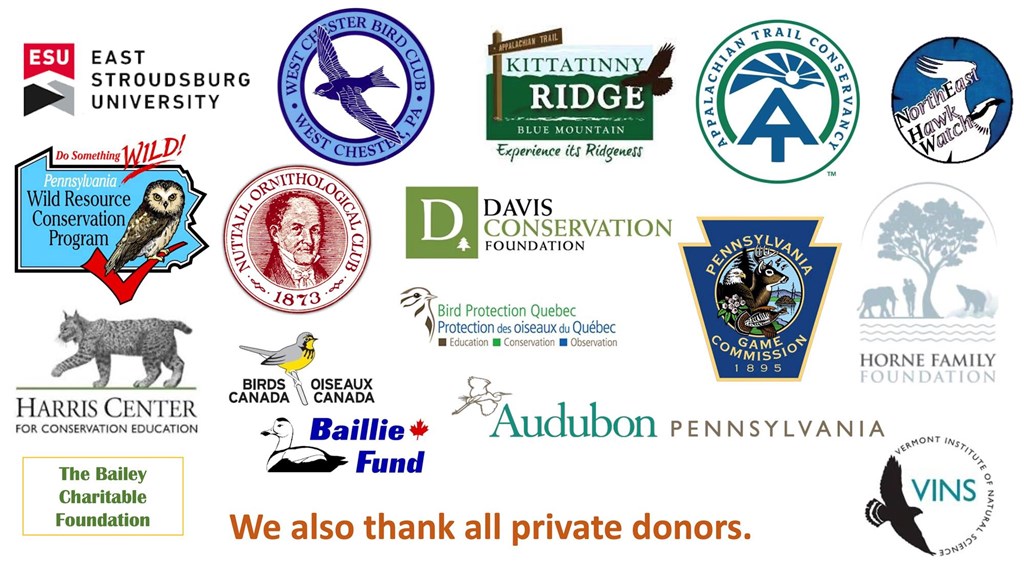
How can you help?
We always appreciate donations to help our efforts. Contact Dr. Laurie Goodrich (570-943-3411 ext 106 or [email protected]), or click the button below to donate broad-winged hawk research. See a nest? Report it now!

